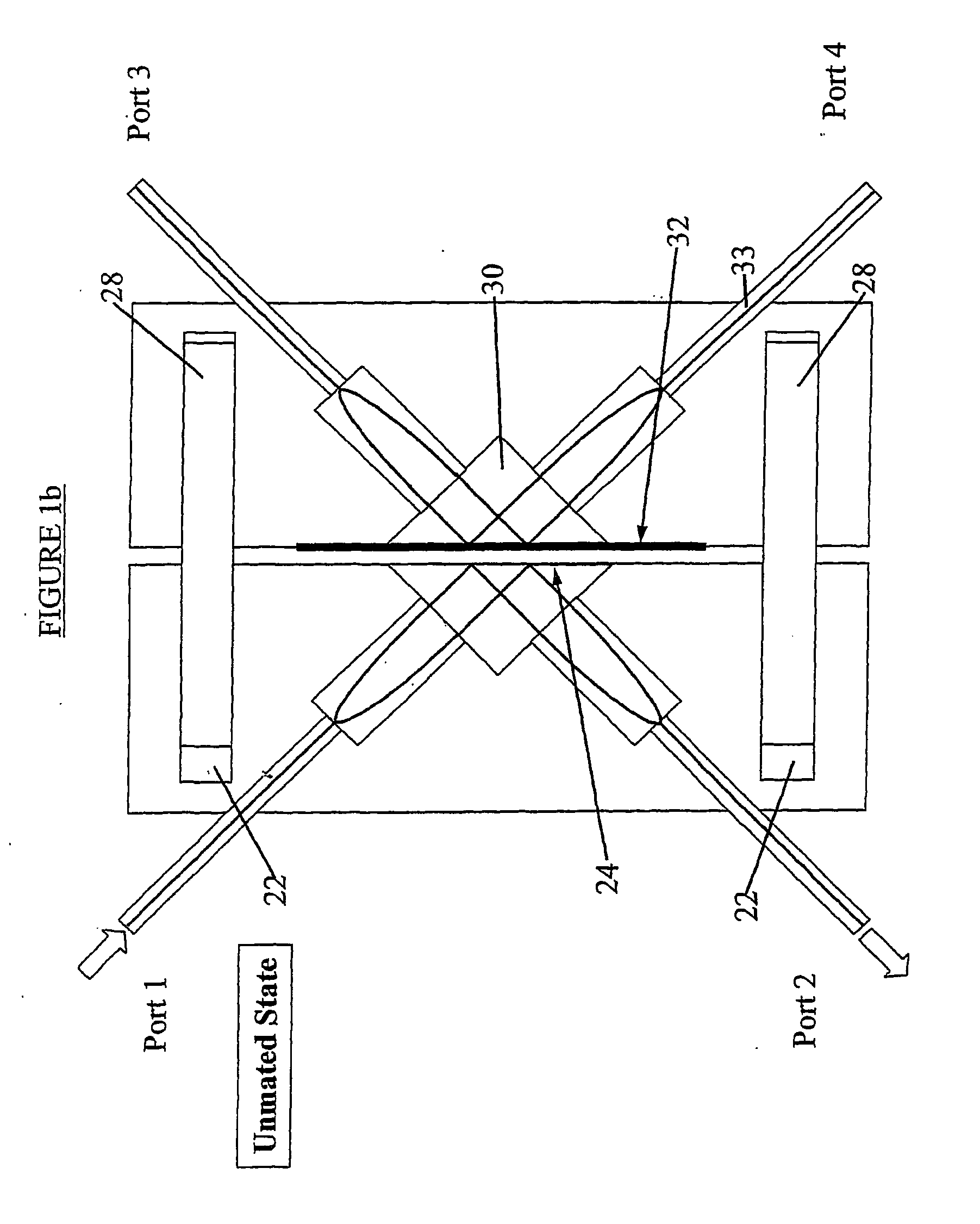Optical connector with total internal reflection abutting surface
- Summary
- Abstract
- Description
- Claims
- Application Information
AI Technical Summary
Benefits of technology
Problems solved by technology
Method used
Image
Examples
third embodiment
[0058] the optical connector according to the invention is illustrated in FIG. 5. This shows a curved refractive element 82 (a hemispherical ball lens), which performs the same reflective functions as the element shown in FIGS. 2 and 3, but in addition uses its curved surface to perform the collimation and focussing operations.
fourth embodiment
[0059] In a fourth embodiment, shown in FIG. 6, a ferrule 86 incorporates a Graded Index (GRIN) Lens 84 employed to perform both the focussing and beam deflection functions for radiation from fibre 85. This is preferably a high aperture GRIN, with a numerical aperture of approximately 0.6, with, for example an index of 1.468 at the radius where the fibre cores are attached (SMF28 fibre), thereby minimising back reflection, and an index of 1.85 at the centre, giving a beam incidence angle of ˜35 degrees to the normal. This comfortably exceeds the critical angle of 32 degrees between the high index material and air.
[0060] The Grin lens is ¼ of a pitch long (hence will translate position at the fibers to angle at the centre of the mating surface). With the fibres as close together as possible, which is advantageous as it reduces the angular alignment tolerance of the connector ferrules), a typical length of the lens of around 0.2 mm, with a diameter at the fibre cores of around 125 mm,...
fifth embodiment
[0061]FIG. 7 shows a fifth embodiment incorporating a ball lens 87 with a polished planar total internal reflection surface 88 at the glass-air interface. The lens is set to perform the deflection and collimation functions by refraction at the curved interface. A space 89 is provided between the optical guides and the ball lens which may be filled with air, a vacuum or any other appropriate low index fluid.
PUM
 Login to View More
Login to View More Abstract
Description
Claims
Application Information
 Login to View More
Login to View More - R&D
- Intellectual Property
- Life Sciences
- Materials
- Tech Scout
- Unparalleled Data Quality
- Higher Quality Content
- 60% Fewer Hallucinations
Browse by: Latest US Patents, China's latest patents, Technical Efficacy Thesaurus, Application Domain, Technology Topic, Popular Technical Reports.
© 2025 PatSnap. All rights reserved.Legal|Privacy policy|Modern Slavery Act Transparency Statement|Sitemap|About US| Contact US: help@patsnap.com



